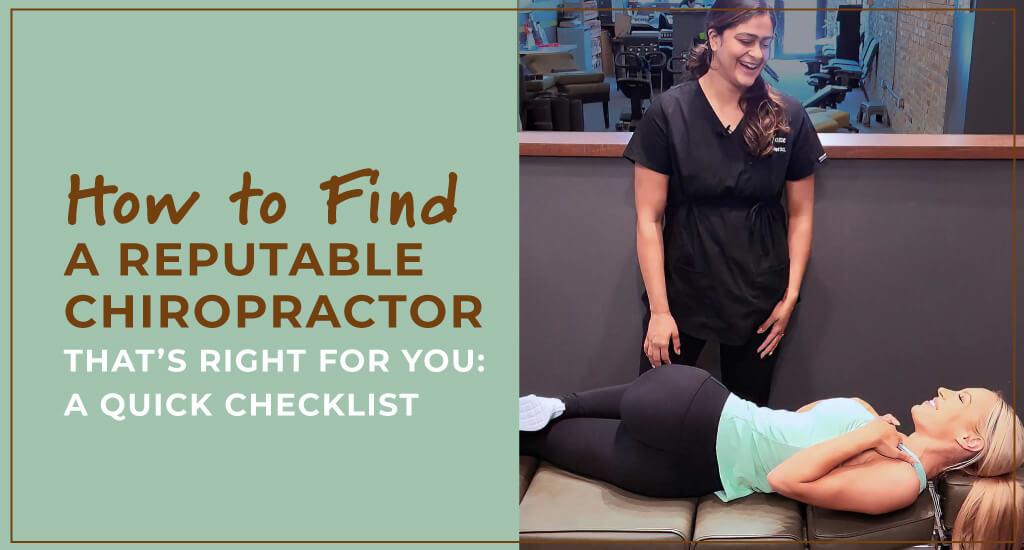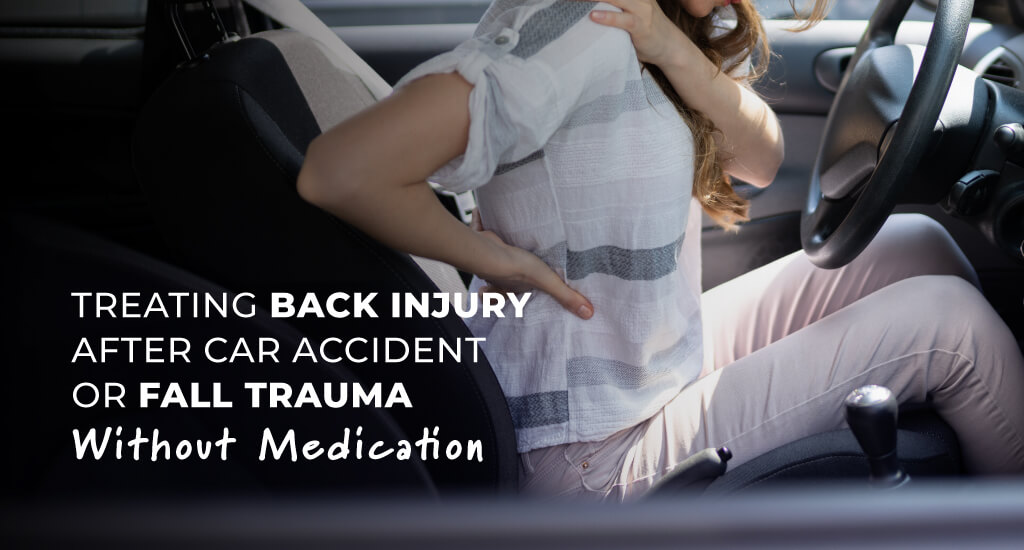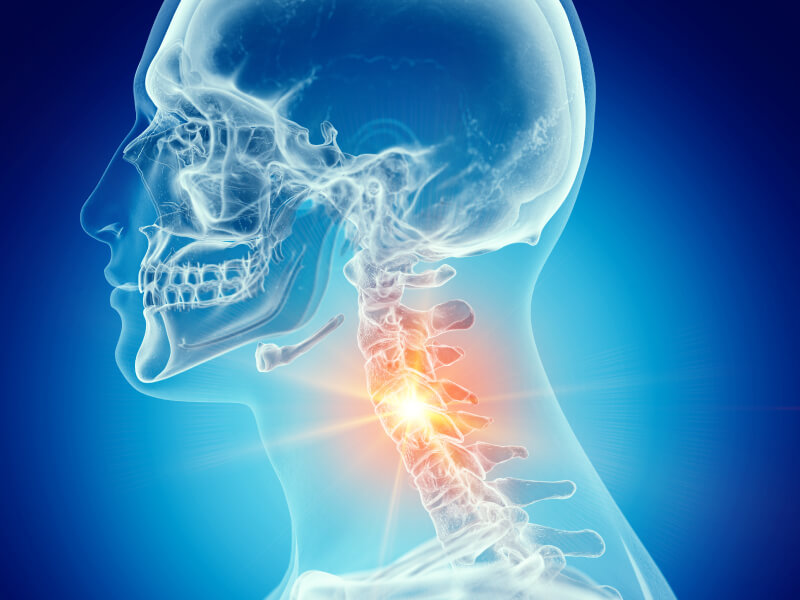
How to Find a Good Chiropractor: Key Tips
Take a closer look at chiropractic care from how it works to what it treats, and how to find a chiropractor that’s right for you.

Crashes, collisions, slips, trips and falls. Pain is an inconvenience most of us can’t afford. So when we experience back injury after car accident or fall trauma, we often convince ourselves that, so long as there’s no pain or broken bones, we’re fine to move on with our regular routine.
Not necessarily.
You don’t need to learn Newton’s Laws of Motion to know that after a head-on, rear or side-impact collision your car stops, but your body continues moving until something — seat belt, airbag, steering wheel, windshield or ground — stops it. During a slip and fall, your body’s movement is similarly accelerated. But you may be surprised to learn that such abrupt, violent movement can injure your spine or joints — without causing immediate pain.
Even after an ER or urgent care professional rules out fractures or breaks, soft tissue microinjuries may be developing. Treating a back injury after a car accident or fall trauma is critical – whether you feel pain right after impact or not.
Our chances of getting into a car accident during a 1,000-mile trip are 1 in 366 and, according to the CDC, over one million Americans suffer a slip, trip, and fall injury every year. And many end up taking pain killers, which do not target the root cause of their pain — the main goal of chiropractic care.
A study published in Pain Magazine found that patients who saw chiropractors were over 60% less likely to fill an opioid prescription. Chiropractic care aims to minimize the damage and recovery time from back injury after car accident of fall trauma by supporting musculoskeletal alignment, strength and mobility.

Diagnosing back injury after car accident of fall trauma may require imaging
After an accident it’s common to be shaken up and sore all over. As a result, you may not notice muscle trauma right away. Cervical vertebrae injuries from whiplash can cause headaches, dizziness, disorientation, and facet joint syndrome. Facet joint syndrome is the irritation or displacement of joint cartilage between two back vertebrae. Back injury after car accident or fall trauma is a leading contributor to facet joint syndrome. Untreated, it can put you at risk of developing arthritis.
That’s why it’s important to track your pain — its quality, severity, frequency and the activities that increase it. Back injury after car accident or fall trauma can prompt symptoms like:
Experiencing a back injury after a car accident or fall trauma can make carrying laundry, groceries or children more difficult. Taking over-the-counter pain relievers will only mask the root cause of your pain. If left untreated, what began as slight aches or twinges could exacerbate into more serious symptoms, and ultimately, a longer recovery time.
Back injury after car accident or fall trauma impacts all three sections of the spine
Your 33 spine bones, 31 nerve roots, and 32 neck and back muscles are supported and protected by tissues, ligaments and tendons, all of which can suffer a wide spectrum of injuries that imaging is not able to detect:
When the back tendons that connect bones to muscles stretch too thin you have a strain. When the ligaments that connect joints to bones or bones to other bones you have a sprain.
The three sections of your spine are all prone to distinct sprain and strain types.
These types of back injury after accident or fall trauma vary in severity and cannot be detected by x-rays or MRIs.
During a car accident or fall the protective discs between your vertebrae can shift, compressing nerve and pushing the inner part of the spinal disc out through the outer ring. When this protruding portion of a herniated disc rubs against a nerve it can cause burning, numbness, or weakness.
When a stress fracture displaces a vertebra, it can compress the spinal canal or nerves causing varying levels of pain. Spondylolisthesis sufferers can also experience weakness, numbness or difficulty walking.
Facet joints allow us to bend or twist without damaging our spine. Nerve roots run through facet joints between spine bones and various body parts like arms or legs. When cartilage thins out or a spine trauma goes untreated facet joints can become damaged. As a result, muscles can spasm, radiating pain or tenderness.
Damaged spinal discs can cause pain or shooting sensations and may lead to sciatica pain radiating through the lower body. For some patients lying down causes more pain, while others find it difficult to sit or stand for extended periods.
A Doctor of Chiropractic can analyze your injuries and assess your mobility, flexibility and strength limitations then treat your injuries.
To restore your spinal alignment, reduce you pain and muscle strain, and improve blood flow, your DC will gently treat you with:
Depending on the severity of your back injury after car accident or fall trauma, you’ll either sit or lie down on a drop table. Using their hands or an adjusting instrument your DC will deliver precise but gentle force into the misaligned joints. The exact location of your misalignment is determined from x-rays that provide three-dimensional measurements.
To correct your misalignment, your DC will gently place your spine in the exact opposite position of your misalignment (the mirror image). Gradually this will retrain your spinal muscles to function properly.
For example, if your back is misaligned to the left, they will position it to the right before delivering your adjustment. Your doctor may us an adjusting instrument to “tap” in key areas of your spine — upper neck, back or hips. This “tapping” sensation stimulates posture control centers in your brain to “reset” your spine back to normal alignment.
Did you know that your chiropractor can also “reset” your spine on a chiropractic drop table? Each sections is lowered during your adjustment depending on your injury. As your DC adjust your joint, the affected area of your body is simultaneously dropped by the table. This technique allows for more gradual and gentle adjustments.
Check in with your nearest Chiro One doctor at one of our welcoming open-plan clinics. They’ll perform a thorough exam to diagnose your pain, then prescribe gentle chiropractic adjustments and active therapies to keep you feeling better longer.
Find a Chiro One doctor near you.
Subscribe and get news, articles & offers sent right to your inbox each month.
"*" indicates required fields
By subscribing you are agreeing to the Terms and Conditions and Privacy Policy.